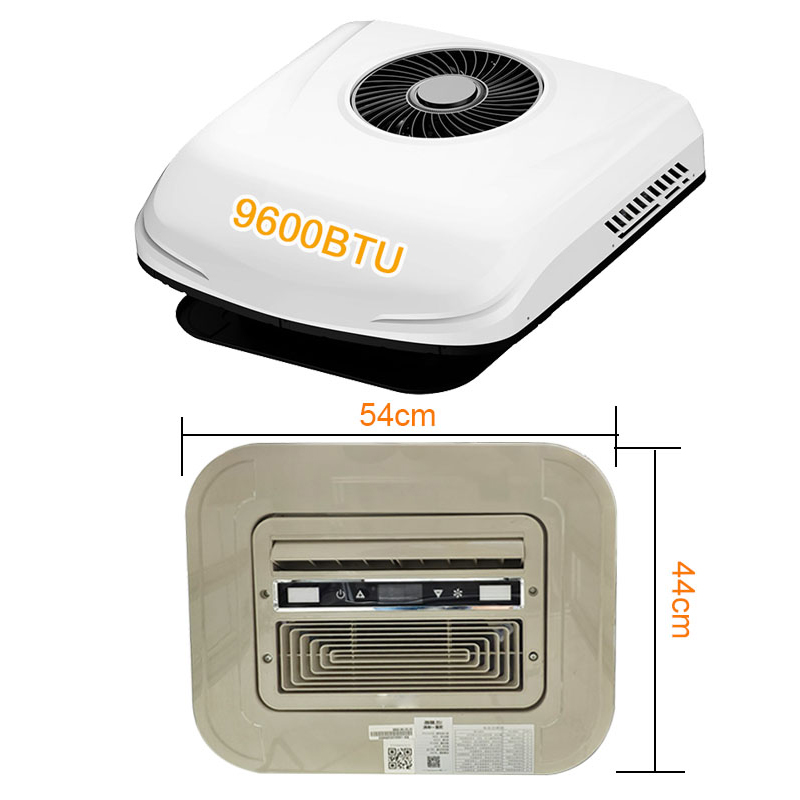The RV Air Conditioner is one of the most essential appliances for maintaining comfort inside recreational vehicles, especially during travel in varying climates. Whether driving through the summer heat or camping in humid environments, an RV Air Conditioner helps regulate the interior temperature and improve air quality. It ensures travelers can enjoy a cool, comfortable, and refreshing atmosphere inside their mobile homes. Like any piece of equipment, however, it comes with both strengths and limitations. Understanding the efficiencies and limitations of the RV Air Conditioner helps users make better choices when selecting, operating, and maintaining these systems for long-term performance.

1. Efficiencies: Performance, Design, and Comfort
The RV Air Conditioner is designed specifically to meet the demands of mobile living spaces, offering strong cooling power in a compact and efficient form. Its main efficiency lies in its ability to cool a confined area quickly and evenly, even when outdoor temperatures are extremely high. Most models utilize advanced compressors and refrigerants to achieve fast temperature drops while maintaining consistent airflow throughout the cabin.
Another efficiency of the RV Air Conditioner is its energy management. Many modern units are engineered to operate efficiently using limited electrical power, making them suitable for both generator and shore power connections. Some models also integrate variable-speed fans or inverter technology, which adjusts cooling output based on temperature needs, reducing energy waste and noise levels. This adaptability makes them ideal for conserving power during long trips or when operating off-grid.
The RV Air Conditioner also contributes significantly to comfort and indoor air quality. Many models feature built-in filters that capture dust and airborne particles, keeping the air clean and fresh. In addition, several units offer dual functionalities such as cooling and dehumidification, helping control humidity and preventing condensation inside the vehicle. These features ensure that the air remains comfortable, especially during hot and humid weather.
Design efficiency is another key advantage. The RV Air Conditioner is compact and lightweight, allowing it to fit seamlessly onto the roof or inside ceiling compartments without taking up valuable interior space. The slim design and aerodynamic housing of rooftop units also help reduce wind resistance while driving, enhancing overall vehicle performance. Additionally, easy-to-use digital thermostats or remote controls make temperature regulation simple and convenient for users.
The RV Air Conditioner is highly efficient in cooling performance, energy conservation, air purification, and space utilization. It is a vital component that enhances both comfort and livability, making travel in recreational vehicles more enjoyable and sustainable.
2. Limitations: Power, Maintenance, and Environmental Factors
Despite its many benefits, the RV Air Conditioner also has several limitations that users should be aware of to ensure proper operation and maintenance. One of the most common challenges involves power consumption. Even though most units are designed for efficiency, running an RV Air Conditioner continuously can place a significant demand on the electrical system, especially when operating from battery power or small generators. This makes energy management critical during extended trips, particularly in off-grid conditions where power resources are limited.
Another limitation relates to the cooling capacity of the RV Air Conditioner. Since most recreational vehicles are smaller than traditional homes, the cooling area is also restricted. A single unit may struggle to maintain uniform temperature control in larger RVs or multi-room layouts. To address this, some users install dual-unit systems or zoned air conditioners, but this increases installation costs and energy usage.
Maintenance requirements also play a significant role in the limitations of an RV Air Conditioner. Like any mechanical system, regular cleaning and inspection are essential for optimal performance. Filters must be cleaned or replaced frequently to prevent airflow obstruction, while coils and vents should be kept clear of dust and debris. Failure to maintain these components can result in reduced cooling efficiency, increased noise, or even system malfunction. Additionally, periodic checks of refrigerant levels and electrical connections are necessary to prevent performance degradation over time.
Noise is another factor that can affect comfort. While newer models are designed with noise-reduction technology, some RV Air Conditioners still produce noticeable sound levels during operation, particularly when running on high settings. This can be disruptive during nighttime use or in quiet environments.
Environmental factors also influence the performance of an RV Air Conditioner. Extreme outdoor temperatures, high humidity, or poor insulation in the RV can reduce cooling effectiveness. When the outside air is too hot, the unit may need to work harder to maintain desired temperatures, leading to increased wear and energy consumption. Similarly, in colder climates, some RV Air Conditioners may not function effectively unless equipped with a built-in heat pump or supplemental heating element.
Installation and cost can be limiting factors. High-quality RV Air Conditioners with advanced features can be expensive, and professional installation may be required to ensure proper sealing and electrical integration. Improper installation can result in air leaks, reduced efficiency, or potential damage to the roof or ceiling structure.